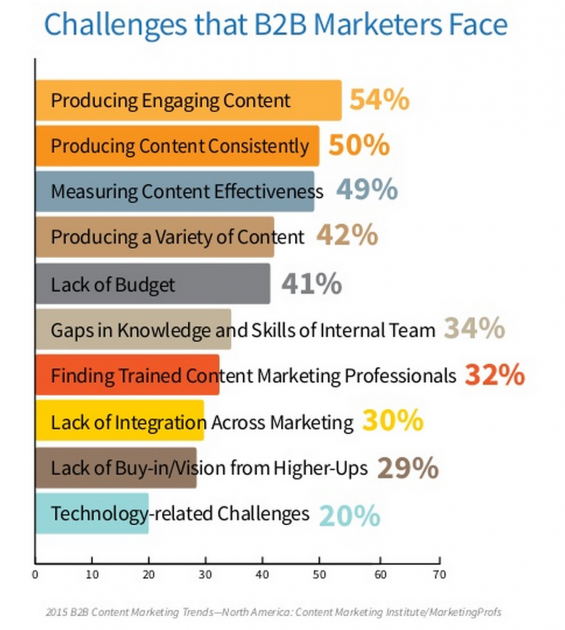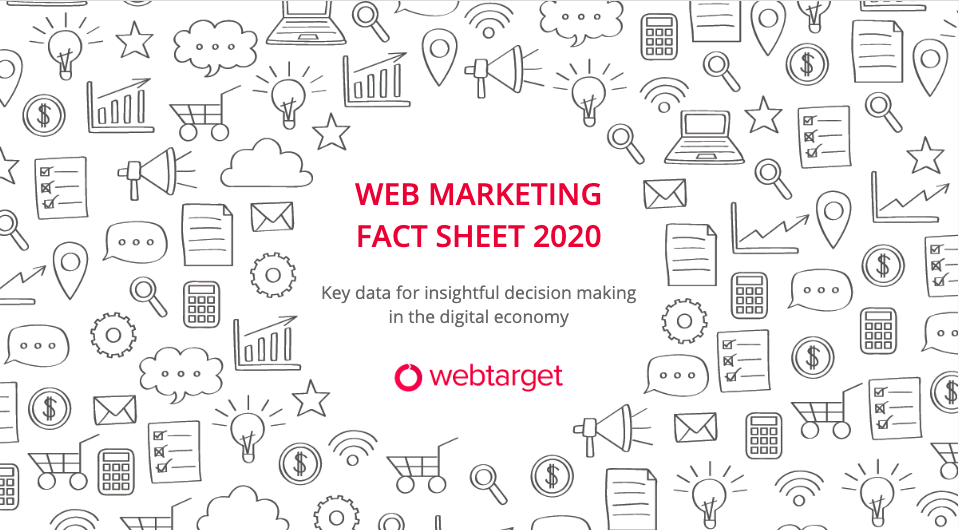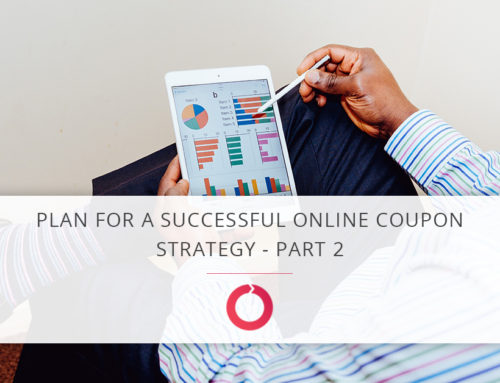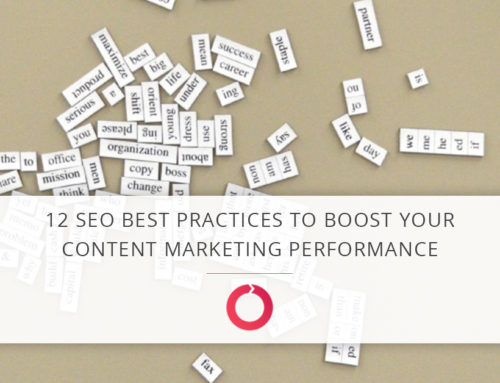Content Marketing has gained tremendous popularity and interest with its promises of generating sales leads, audience engagement and enabling a company to be perceived as a resource for utility content or thought leadership. But as companies are starting to understand the value of publishing relevant content on a regular basis, they also realize how hard it is to do content marketing well if they’re not fully committed to the endeavour or have the means to produce the right type and the right amount of content.

The most common Content Marketing challenges
As illustrated here above in a Marketing Profs & Content Marketing Institute study in 2014, the top 5 reported challenges are:
- Producing engaging content: 54%
- Producing content consistently: 50%
- Measuring content effectiveness: 49%
- Producing a variety of content: 42%
- Lack of budget: 41%
In order to be prepared to overcome these main challenges we believe that there are 3 essentials steps to take: Ownership, patience and measurement.
Committing to Content Marketing by allocating a budget and having someone in charge of owning and driving the content plan
Someone has to own the Content Marketing initiative within an organization and manage and sometimes fight for a budget allocated to the effort. Without anyone responsible for the content production and distribution operations and for making sure that resources are aligned with ROI expectations, companies are sure to encounter the most common challenges listed above.
Some committed organizations have appointed a Content Marketing Officer to drive these efforts and to be accountable for their success. As companies are slowly but surely becoming their own media, they will have to appoint an Editor in Chief responsible for overseeing this part of Marketing, and managing internal as well as outsourced resources.
Having the budget and resources to produce the type and volume of content that will generate results requires someone to champion Content Marketing and supervise execution.
Content Marketing requires patience and resilience as it takes time to build a captive audience online
Rome wasn’t built in one day, and it is the same for building a body of content worthy of the attention of search engines and of your target audience. Understanding what content types and what channels create the most engagement and generates leads takes time and experimentation.This isn’t achieved overnight.
It also takes time to build an audience, to grow traffic, and to generate interest and engagement for your brand and your products and services through Content Marketing. This can make it hard for your boss or for your board to see the value or ROI and sustain the continuous investment that is required to produce various types of content on a regular basis.
The latest HubSpot study demonstrates that at least 6 and 8 blog posts are required to be published every month for a website to start seeing a leap in the amount of traffic and leads the website will generate. This kind of investment in planning and then producing is significant and requires commitment and trust from decision makers.
Content Marketing success comes with time as the body of content is developed, published regularly over time, and indexed in search engines. Understanding the time frame for expected success is essential to level expectations and sustain efforts.
The ROI of Content Marketing is defined by a sales conversion funnel, not by Web activity metrics
Another very common issue with understanding the value of Content Marketing initiatives is the ability to measure a return on investment. In the day and age of the Internet where most online actions are traceable, the issue is not measurement but rather to define performance in a relevant and tangible way. Then of course, tracking needs to be setup and measured regularly.
Performance should be based on the steps of a determined conversion funnel and metrics should be established for each step of this funnel. A typical conversion funnel could look like:
Step 1: user lands on homepage
Step 2: user reads a blog post
Step 3: user read a product or service page
Step 4: user filled in Contact form
Step 4 alternative: user filled in form to download something you offer
Here is an example of a classic B2B blog lead generation funnel:

Defining performance in terms of web activity such as overall visitors and pages views of a website won’t reflect performance as much as much as measuring how many users start at step 1 (for example: arrive on a landing page) of the funnel and reached step 4 (for example: fill in a contact form) which is what we wanted them to ultimately do and that we qualify as a business goal.
In conclusion
While it’s true that defining the content tactics and producing enough content are very common Content Marketing challenges, these challenges can be more effectively tackled when the company:
- has allocated a budget and appointed someone to be responsible for overseeing Content Marketing initiatives
- has understood that Content Marketing takes time to build up and leverage in order to generate engagement and sales leads
- has defined success metrics (KPIs) based on conversion funnels rather than generic Web activity metrics
The Webtarget Guide to Digital Marketing
Find out about the latest trends, performance benchmarks and best practices in online marketing. Subscribe to our newsletter to receive our free online marketing guide for 2020.




